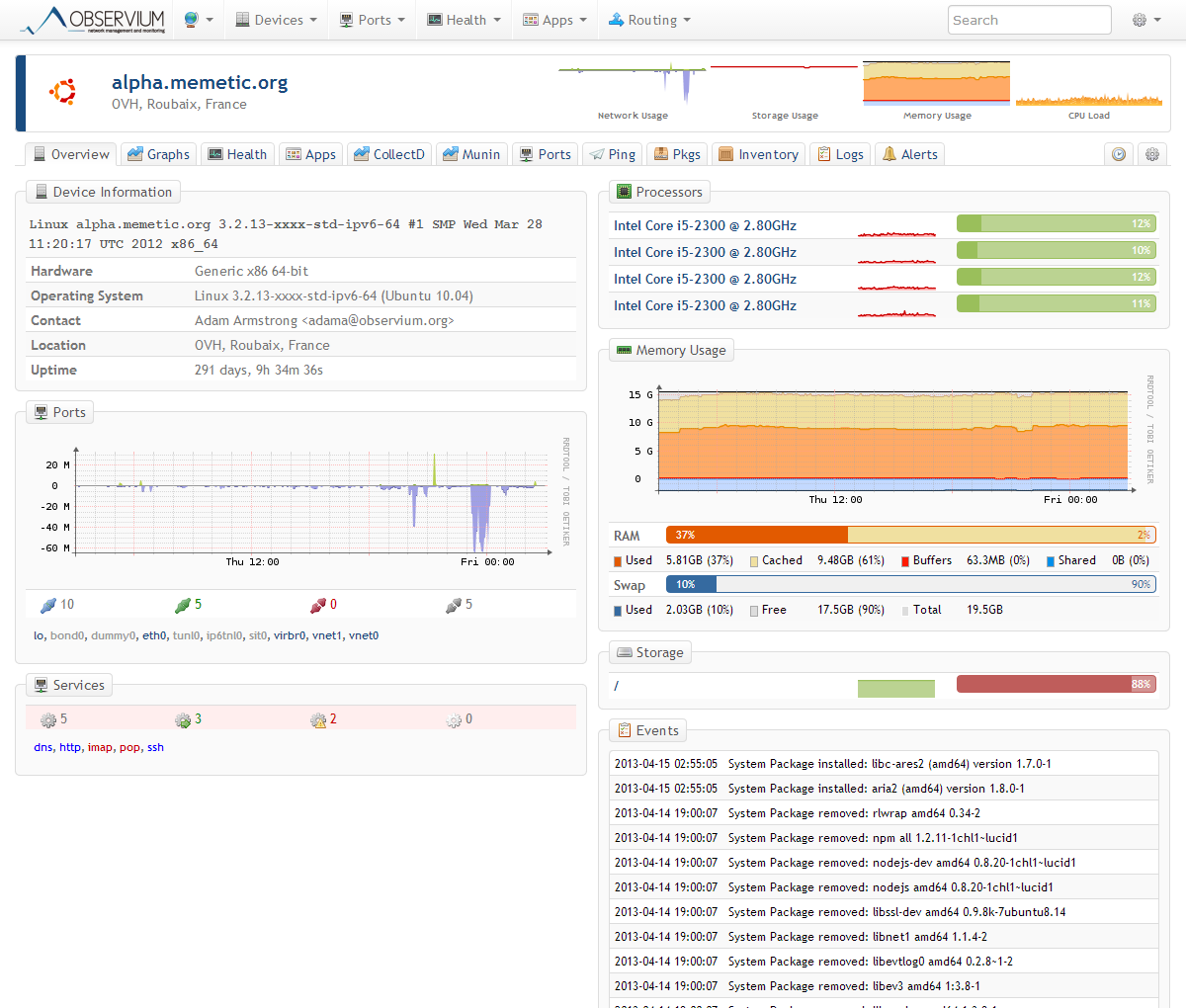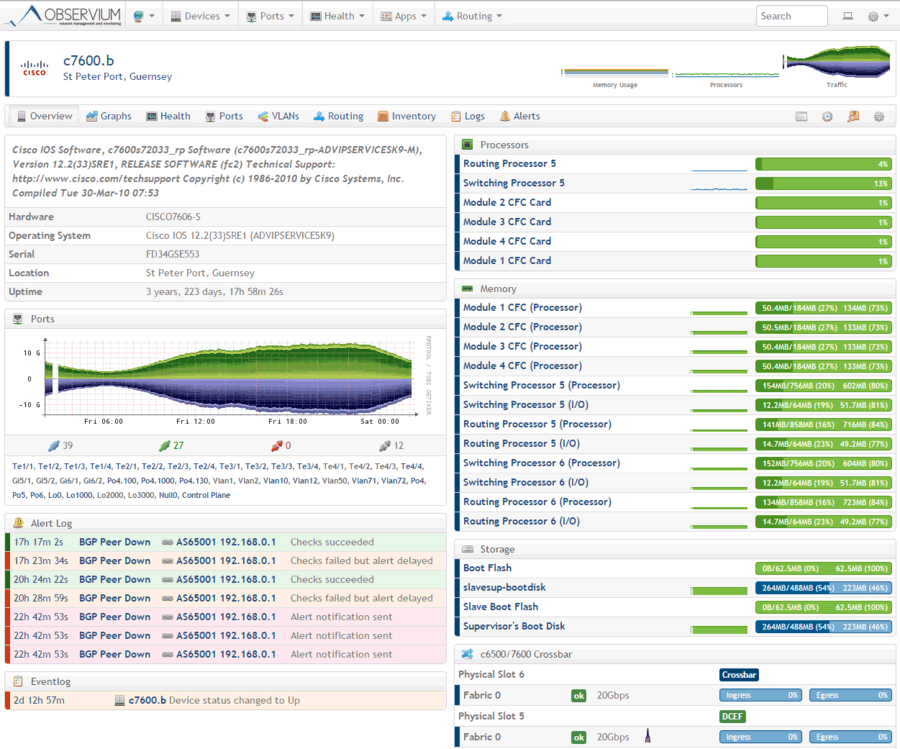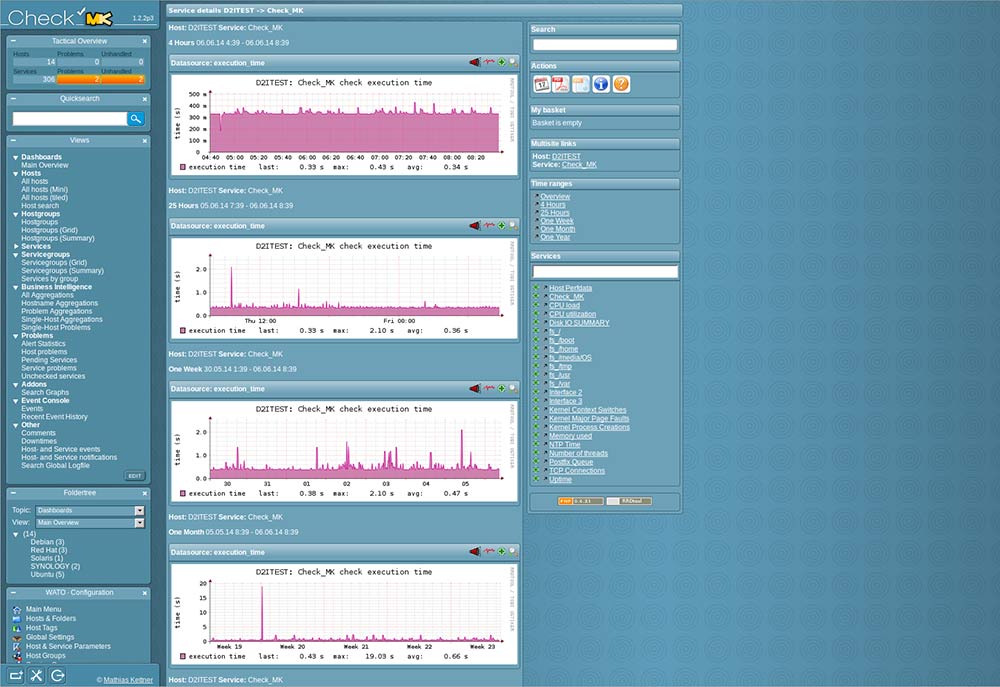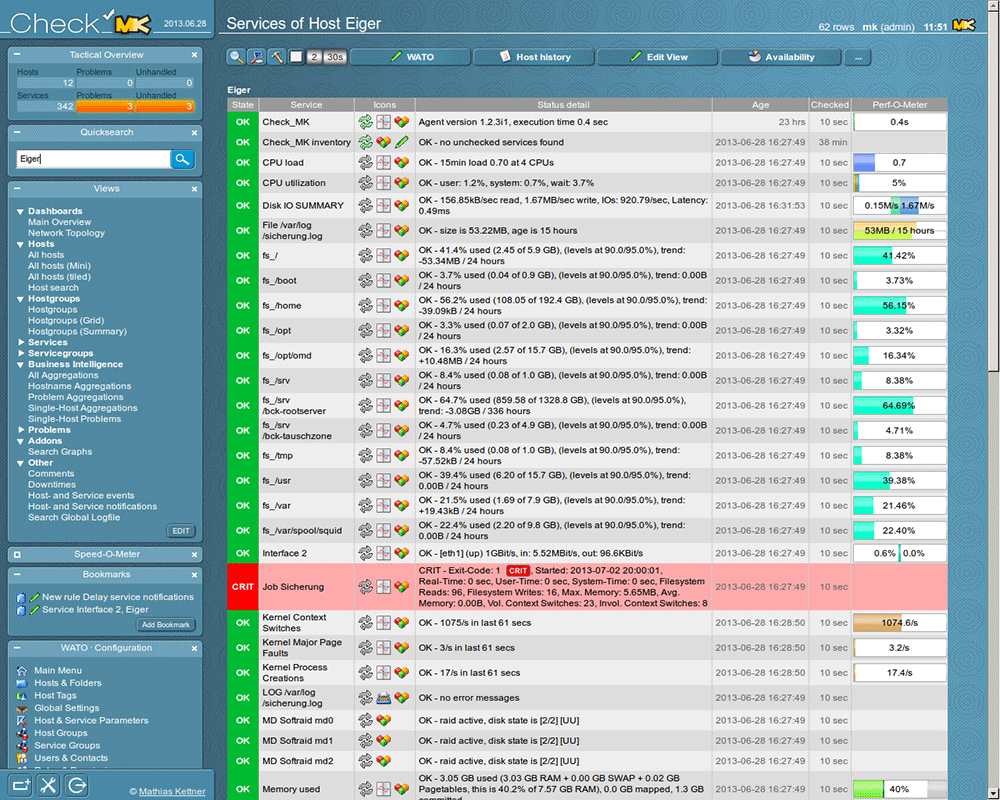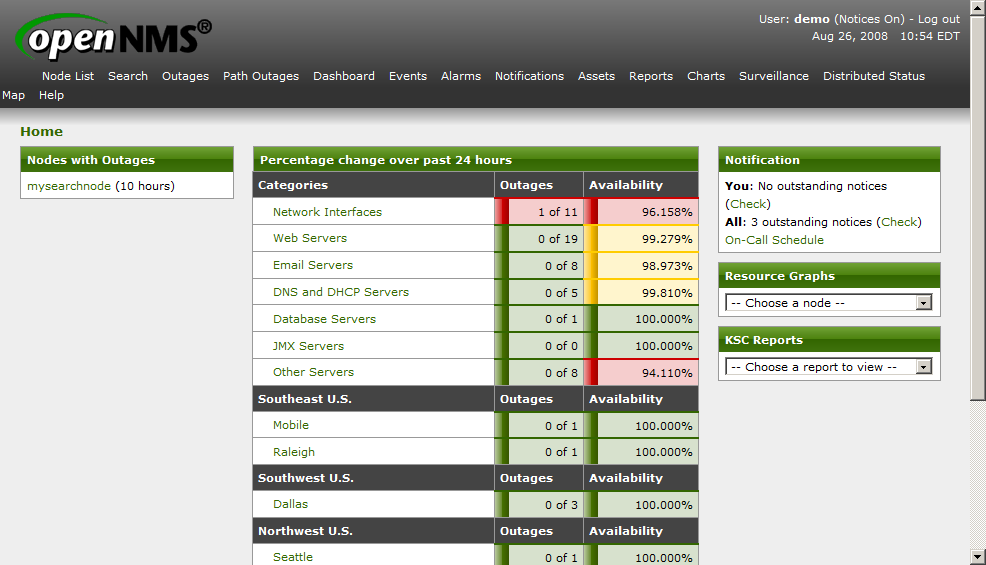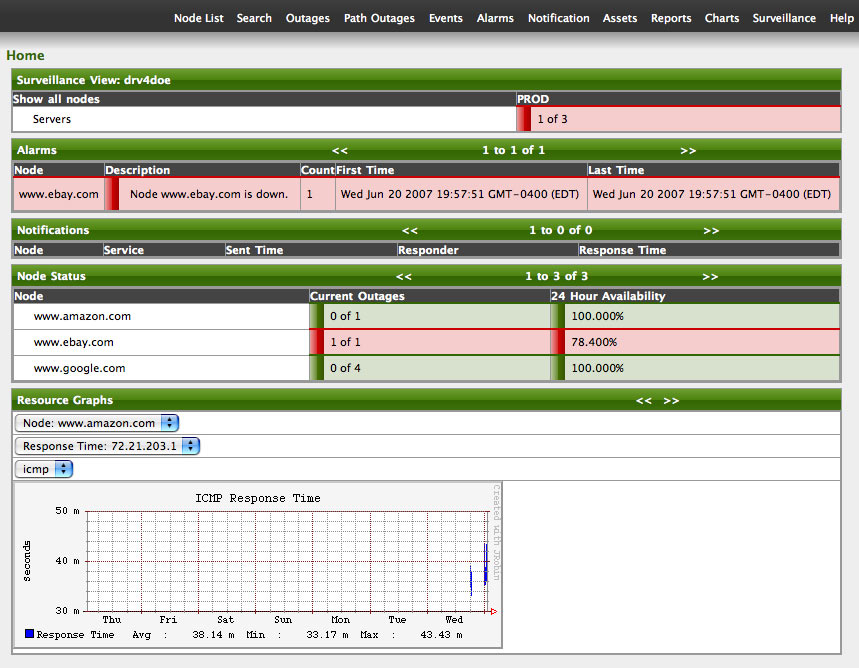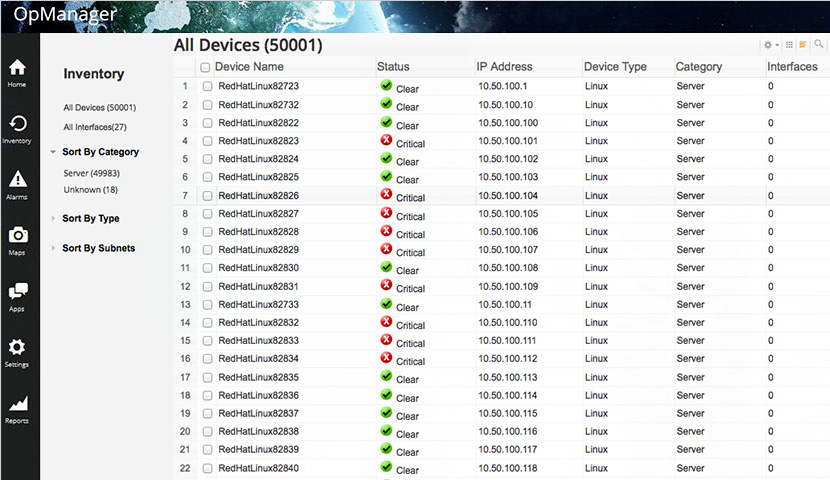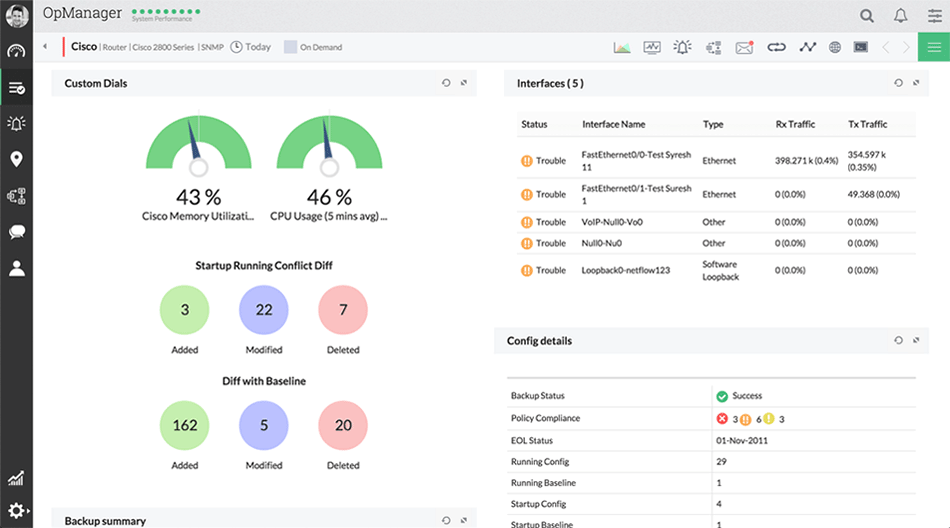24. Observium
Observium is a PHP/MySQL-based Network Observation and Monitoring System (NOMS) which collects data from devices using SNMP and presents it via a web interface. It makes heavy use of the RRDtool package.
Observium has a number of simple core design goals driving its development: minimum interaction, maximum automation and maximum accessibility of information. These design goals have resulted in a slightly unconventional monitoring system with almost no individually customisable settings per device, and where almost everything that can be monitored is automatically discovered.
Observium doesn’t seek to totally replace other Open Source projects such as Nagios or Cacti (software) but rather to supplement them with greater understanding of certain devices and technologies. For this reason it’s common to see Observium deployed alongside Nagios or Mon to provide alerting and Cacti to provide customised graphing of arbitrary metrics.
Observium integrates specific support for a number of vendor and platform specific features such as Dell OMSA on Linux platforms, Net-SNMP statistics as well as a number of Cisco-specific features such as Cisco Discovery Protocol, inventory tracking and VLAN tracking. The FreeBSD-based firewall, m0n0wall, was modified to allow Observium to identify and monitor it.
Observium uses the GeSHi, RANCID, and jpgraph software packages to extend its features, and can be integrated with Nagios to provide alerts and Collectd to provide more detailed graphs for UNIX-like hosts.
25. Open Monitoring Distribution
Open Monitoring Distribution (OMD) is a self-contained bundle that includes Nagios together with add-ons for gathering, monitoring, and graphing data.
It comes bundled with Check_MK Multisite, a comprehensive tool that addresses many of Nagios’s shortcomings.
It provides a web interface for easy administration and configuration, a user-friendly dashboard, a robust notification system, and easy-to-install monitoring agents for many Linux distributions.
26. OpenNMS
OpenNMS is based around a “publish and subscribe” message bus. Processes within the software can publish events, and other processes can subscribe to them. In addition, OpenNMS can receive events in the form of SNMP Traps, Syslog messages, TL/1 events or custom messages sent as XML to port 5817.
Events can be configured to generate alarms. While events represent a history of information from the network, alarms can be used to create correlation workflow (resolving “down” alarms when matching “up” alarms are created) and performing “event reduction” by representing multiple, identical events as a single alarm with a counter. Alarms can also generate events of their own, such as when an alarm is escalated in severity. Alarms clear from the system over time, unlike events that persist as long as desired.
The Alarm subsystem can also integrate with a variety of trouble ticketing systems, such as Request Tracker, OTRS, Jira, Quickbase and Concursive.
The software also contains an Event Translator where incoming events can be augmented with additional data (such as the impact to customers) and turned into new events.
Events can generate notifications via e-mail, SMS, XMPP and custom notification methods.
27. Opmanager
ManageEngine OpManager is a network and data center infrastructure management software that helps large enterprises, service providers and SMEs manage their data centers and IT infrastructure efficiently and cost effectively.
Automated workflows, intelligent alerting engines, configurable discovery rules, and extendable templates enable IT teams to setup a 24×7 monitoring system within hours of installation.
The free edition offers 10 devices, single user, with basic monitoring functionality.


